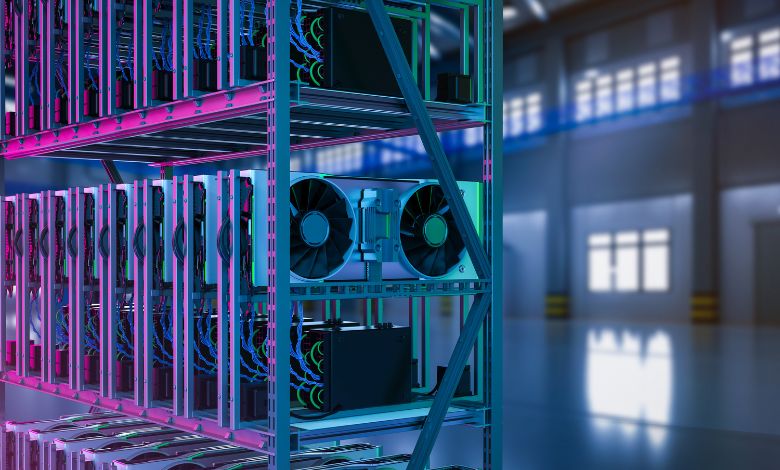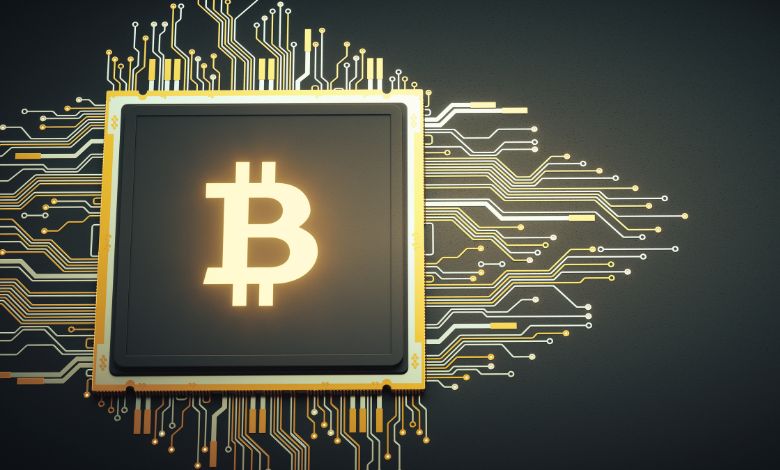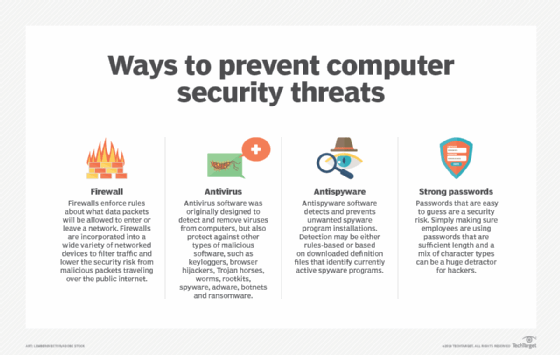Why is Crypto Mining Noisy? Unveil the Loud Truth!

Crypto mining is noisy due to the high-powered computer hardware required. Cooling fans used to prevent overheating contribute significantly to the noise.
Cryptocurrency mining demands substantial computational power to solve complex mathematical equations, which can only be provided by powerful computer systems. These specialized machines, known as mining rigs, consist of multiple high-performance graphics processing units (GPUs) or application-specific integrated circuits (ASICs).
To maintain optimal performance and avoid heat-induced failures, these components must be kept cool. This necessity results in an array of cooling fans working at full throttle, generating a substantial amount of noise. The environment within a mining setup, therefore, resembles an industrial site rather than a quiet office, with decibel levels soaring as miners work tirelessly to validate transactions and secure the blockchain network.
Contents
The Sound Of Progress
Imagine a hive buzzing with activity; this is the sound of crypto mining, a constant hum of progress. In the world of cryptocurrency, noise equates to action. The powerful systems working tirelessly to solve complex equations are anything but silent. The sound of mining rigs is the heartbeat of blockchain technology’s growing footprint. Each whir of the fan blades and click of hard drives represents the physical efforts to secure and expand digital currencies.
The Mechanics Of Mining Noise
Why do these machines make so much noise? Let’s break it down:
- Cooling Fans: High-speed fans prevent overheating, creating a baseline whir.
- Hardware Operations: Hard drives and other components have mechanical parts that emit sound when in use.
- Case Vibrations: The intensity of operations can cause the mining rig’s case to vibrate, adding to the noise level.
Noise Levels In A Typical Mining Operation
A standard crypto mining setup includes multiple rigs, each contributing to the overall noise. Below is a table illustrating typical noise levels found in a crypto mining operation.
| Source | Decibel Level (dB) |
|---|---|
| Individual Mining Rig | 70-80 dB |
| Small Mining Farm | 80-90 dB |
| Large Mining Farm | 90+ dB |
To put this in perspective, 70 dB is as loud as a vacuum cleaner, while 90 dB compares to a lawn mower. Large-scale mining operations can be as loud as a live concert, indicating serious volumes of digital hustle.

Mining Hardware At Work
Understanding the noise from crypto mining is key to appreciating the process. High-powered computers work day and night to validate transactions and secure the network. This constant strain generates a buzz that echoes through mining operations. Explore what sits at the heart of this digital gold rush beneath the roar of machinery.
Types Of Mining Rigs
Different mining rigs serve diverse needs. Loudness varies by machine type:
- ASIC Miners: Specialized for efficiency but loud due to speed.
- GPU Rigs: Flexible and common, with multiple fans running.
- FPGA Rigs: Advanced, with potential for volume control.
Components That Contribute To Sound
Several parts of mining hardware contribute to the noise.
- Cooling Fans: They prevent overheating but spin fast and loud.
- Heat Sinks: Passive cooling parts that can amplify fan sounds.
- Hard Drives: Older models are noisier than SSDs during operation.
- Power Supplies: They manage electricity but hum under the load.
Together, these elements sustain mining but create a symphony of sounds reminiscent of a busy factory floor.
Cooling Systems And Decibels
Crypto mining generates massive heat. To protect expensive equipment, mining setups use robust cooling systems. These systems are often loud. They ensure performance stays high and breakdowns low. We’ll dive into why these systems make such a din and explore a quieter solution.
The Role Of Cooling Fans
Cooling fans are vital in dissipating heat. They work hard to push hot air away from critical components. More fans equal better cooling. Yet, this creates a cacophony of noise. The decibel level increases with each fan added. Large-scale mining farms can reach noise levels comparable to industrial machinery.
- Fan blades cutting air create sound waves.
- Fast-spinning fans produce more noise.
- Multiple fans needed equals higher decibels.
Liquid Cooling: A Quieter Alternative?
Liquid cooling systems offer a more silent option. They use a special fluid to transfer heat instead of air. This method can decrease the sound output significantly.
Fewer fans, less noise. These systems might include a fan for the radiator, but overall, they’re quieter than multiple cooling fans.
| Cooling Type | Noise Level |
|---|---|
| Air Cooling (Fans) | Higher Decibels |
| Liquid Cooling | Lower Decibels |
Operational Environment
The ‘Operational Environment’ of crypto mining plays a crucial role in noise levels. Various factors contribute to the noisy nature of crypto mining operations which can impact both miners and those residing near mining locations.
Industrial Vs. Home Mining
Industrial mining setups differ greatly from home mining operations. The size, scale, and equipment can impact noise.
- Industrial mines use a vast number of specialized machines. These powerful setups create significant noise.
- Home miners might have fewer machines, but the noise can still be bothersome in a living space.
Acoustics Of Mining Locations
Acoustics are essential in determining how sound travels and is absorbed within a mining setup.
- Hard, flat surfaces can amplify noise, making an industrial mining warehouse noisy.
- Soft materials and divided spaces can help reduce noise in home environments.
| Location Type | Characteristics | Acoustic Impact |
|---|---|---|
| Industrial | Large, open spaces with metal surfaces | Higher echo, increased noise level |
| Home | Smaller, compartmentalized areas with furniture | Lower echo, potential noise reduction |
Noise Reduction Techniques
Cryptocurrency mining can get loud, generating a buzz akin to a hive of diligent bees working overtime. The sound emanates from high-performance computers solving complex mathematical puzzles. Each miner races to solve these puzzles first. Success means the miner adds a new block to the blockchain. But with this digital gold rush comes a chorus of whirring fans. These fans keep the mining rigs cool. So, let’s delve into how to dial down the decibels with effective noise reduction techniques.
Soundproofing Strategies
Turning down the volume on your crypto mining setup hinges on clever soundproofing. Investing in acoustic materials can drastically cut noise levels. Here are some go-to strategies:
- Enclosures: Place mining equipment inside sound-dampening enclosures. Enclosures muffle the roar of fans.
- Materials: Use materials like foam or mass-loaded vinyl. Soft materials absorb sound. Heavier ones block it.
- Vibration Dampeners: Equip your setup with anti-vibration mounts. These reduce the rattle of hardware.
- Strategic Positioning: Position rigs away from walls and corners. These areas amplify noise.
Innovations In Silent Mining Tech
Beyond traditional soundproofing, technology evolves to make mining quieter. Here’s a glimpse at silent mining tech:
| Type of Tech | How It Helps |
|---|---|
| Liquid Cooling Systems: | These conduct heat away from the system. Fewer fans are needed, reducing noise. |
| Low-Noise ASIC Miners: | Designed to be quieter, they make less noise right from the start. |
| Software Solutions: | Mining software can control fan speeds. Lower speeds mean less hum. |
By embracing these innovations and strategies, miners can enjoy a quieter environment. Quieter mining is neighbor-friendly and less distracting. It contributes to a more pleasant and sustainable operation.
Health And Legal Implications Of Noise
The roar of machines working overtime often signals the intense activity of crypto mining. Yet, beyond the digital hustle lurks a little-discussed challenge: noise. Noise may seem a trivial concern in the quest for cryptocurrency rewards, but it carries significant health and legal implications, impacting miners and communities alike. Let’s delve into these implications and explore how they affect those involved in the crypto mining industry.
Impact On Miners’ Health
The constant hum of mining equipment doesn’t just fade into the background. Over time, this noise can take a toll on those exposed to it daily.
The consequences of prolonged noise exposure include:- Hearing loss: Loud noises can damage the sensitive parts of the ear.
- Sleep disturbances: Noise from mining operations can disrupt sleep patterns.
- Stress-related illnesses: Persistent noise is tied to increased stress levels, which can lead to health issues.
Miners must ensure they use ear protection and limit exposure where possible to safeguard their health.
Noise Regulations And Compliance
Legal standards are in place to protect communities from excessive noise, and crypto miners must take note.
Key aspects of noise regulation include:- Decibel limits: Laws often specify maximum noise levels for industrial activities.
- Operational hours: Restrictions on when mining can occur to minimize disturbance.
- Fines and penalties: Consequences for non-compliance with noise regulations.
Mining operations must comply with these regulations to avoid legal repercussions and maintain positive community relations.
Community Perspectives
Cryptocurrency mining has surged in popularity. But it comes with an often overlooked side effect: noise. Let’s dive into the community reactions and the impact this noise has on daily life.
Public Opinion On Mining Noise
Mining operations are loud. Members of various communities have voiced their concerns.
- Residents report disruptive humming sounds.
- Some communities experience round-the-clock noise.
- Public forums show countless complaints about mining noise.
Peaceful environments turn chaotic, affecting the quality of life.
Mining noise is sparking disputes across the globe. Here are a few instances:
| Location | Dispute Summary | Outcome |
|---|---|---|
| New York | Residents file lawsuit against a mining facility. | Restrictions placed on operating hours. |
| Quebec | Community protests against mining noise. | Mining operation halted. |
| Norway | Local government issues noise regulations. | Mining farms implement soundproofing measures. |
These case studies highlight the tension between miners and residential communities.
Future Of Mining Noise
The Future of Mining Noise is a hot topic among crypto enthusiasts and environmentalists alike. As mining operations grow, so does the hum of countless machines working around the clock. This buzz is not just a background annoyance—it can influence the very sustainability and location strategies of mining ventures. The upcoming sections delve into how innovators are tackling the noise conundrum, shaping the echo of mining operations for years to come.
Trends In Quieter Mining Operations
Bold steps are being taken towards silencing the clamor of crypto mining. Industry pioneers are leveraging new technology to bring about an era of quieter mining. The focus has shifted to:
- Advanced cooling systems that reduce the need for loud fans.
- Soundproof enclosures to muffle operational noise.
- Low-noise hardware designs prioritizing acoustics.
- Eco-friendly mining rigs that use less power and, in turn, generate less heat and noise.
The ultimate goal is to integrate mining rigs seamlessly into residential and commercial areas without the current noise disruption.
Noise As A Factor In Mining Location Decisions
The roar of mining equipment has become a crucial factor in selecting a location. Here’s how noise influences these critical decisions:
| Factor | Influence on Location |
|---|---|
| Local noise regulations | Mining sites must comply with regional sound limits. |
| Proximity to residential areas | Quieter zones are preferred to minimize disturbances. |
| Soundproofing options | Facilities with noise-cancellation capabilities are in demand. |
| Community relations | Operators seek harmonious coexistence, avoiding noise pollution. |
Future mining farms might nestle in remote areas or underwater to keep their acoustic footprint unseen and unheard.
Frequently Asked Questions
Why Do Crypto Miners Make Noise?
Crypto miners generate noise due to the high-powered cooling fans and other electrical components working to prevent overheating while processing complex algorithms.
How Do You Reduce Mining Rig Noise?
To reduce mining rig noise, encase the setup in soundproof materials, use anti-vibration mounts for fans, replace noisy components with quieter alternatives, maintain a cool environment to limit fan speed, and strategically position your rig away from common areas.
Why Is Crypto Mining No Longer Profitable?
Crypto mining profitability has declined due to increased competition, higher energy costs, and the reduced rewards from mining over time. Advanced mining equipment’s rising expenses also impact profits negatively.
Is There A Downside To Mining Crypto?
Yes, mining crypto can have downsides, including high energy consumption, equipment costs, and environmental impact. Market volatility also affects profitability.
Conclusion
Wrapping up, the din of crypto mining stems from its high-power hardware and cooling demands. This racket is inherent to securing blockchain integrity and minting digital currencies. Understanding this helps us appreciate the physical cost of virtual coins. For peace and progress, miners must innovate quieter solutions.
Keep exploring this tech frontier with us.



